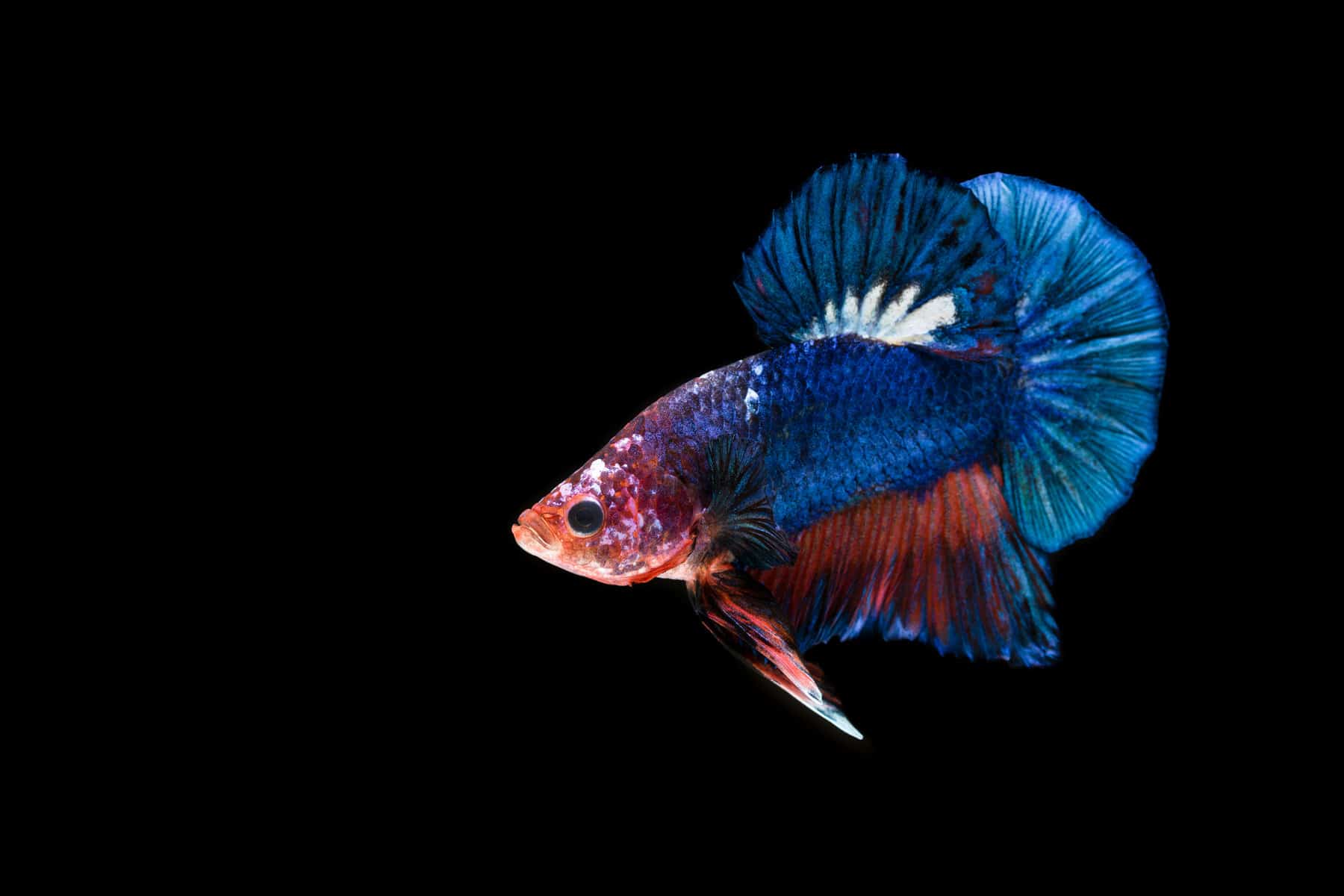“Betta pitbull” sounds like an aggressive name, but what exactly is a Betta pitbull and how do you care for one?
Let’s discuss how to set up your tank, feed, and breed this particular betta fish…
What Is a Betta Pitbull?
Betta pitbull may sound like a combative name, but what is a Betta pitbull, really? Well they are sometimes referred to as Betta plakat or Siamese fighting fish.
And yes, betta fish are known for being aggressive fish. The nickname Siamese fighting fish is well deserved!
The Betta pitbull’s scientific name is Betta splendens and they belong to the Perciformes order and the ocephronemidae family. A Betta pitbull can grow anywhere from two to three inches and typically live for three to five years.
Their extravagant colors and simple care routine make them one of the most common domestic fish!
Feeding a Betta Pitbull
Betta pitbulls are carnivores. They eat live insects and protein-based pellets. One common misconception about feeding a Betta pitbull is that they can eat plant-based pellets when in actual fact, they cannot.
Experts recommend a variable diet consisting of both types of food. A good guide to follow is two to four protein-based pellets twice a day. You can also use powder food for these fish.
One to two days a week, you should substitute pellets for live food such as brine shrimp, daphnia micro worms, and blood worms for a more variable and healthy diet.
It’s very important that you follow care guides, especially in regard to feeding. There are many dangers that can arise from an improper diet. Overfeeding can often cause swim bladder disease, creating an unhealthy tank if leftover food is left.
Tank Do’s
Setting up your tank properly is one of the most important things you can do to ensure the health and safety of your Betta pitbull.
Luckily, we have a few tips and tricks for just that. We’ll start with what TO do:
Keep the Water Warm
Betta pitbulls are naturally found in tropical waters and prefer warmth. A healthy tank will range from 72- 82 degrees Fahrenheit.
Maintain Acidity
One thing you can do to ensure a healthy tank is to mimic the betta’s natural habitat’s acidity. Healthy pH levels for Betta pitbulls are 6- 7.5.
Most pet stores will even sell test kits for testing your tank’s pH. If your tank’s pH is too high or too low, you can also purchase solutions to correct these issues.
Decorate Your Tank
Tank decor can serve a variety of functional purposes for your Betta pitbull. Decorations can serve as both hiding places or resting spaces.
All decorations should be smooth and without sharp edges. But remember, don’t overdo it. Your fish should still have plenty of room to swim around and play.
Tank Don’ts
We’ve talked about what to do with your tank. Now, let’s talk about what NOT to do with your tank:
Small Tanks
Do not use a tank of fewer than five gallons for a Betta pitbull. Despite their small size, these betta’s need a lot of space!
Multiple Pitbulls
Keeping multiple male Betta pitbulls is never a good idea due to their aggressive nature. However, Betta pitbulls do require tank mates…
The best fish to be tankmates with a Betta pitbull are bottom-dwelling fish such as Cory catfish, Peaceful barbs, and gouramis. All these fish will stay out of the way of your Betta pitbull.
Breeding
Breeding a Betta pitbull is no walk in the park. The process requires many steps and a significant amount of planning. Don’t worry; if you’re up for the challenge, we’ll teach you how!
You’ll first want to know that Betta pitbulls are extremely picky about who they choose to mate with. According to badmanstropicalfish.com, the best chance you will have at a successful mating is for the pair (male and female) to be exposed to each other at a young age.
This will help the mating process go smoother because they will be used to each other by maturity.
When mating, it is important for females to eat high-protein foods. This helps with fertility. When the male is ready to mate, he will begin building the bubble nest, where he will eventually care for and raise the fry (babies) independently of the female.
Note: It may not always go so smoothly. Betta pitbulls are picky when it comes to mating. Just because a female has eggs doesn’t mean she will allow a male to fertilize them.
It is possible for the female to reject and destroy the male’s bubble nest. In this case, she will lay her eggs and allow them to wither away, thus preventing any chance that they will become Betta pitbulls.
After successful mating, always separate the male and female bettas. The male should be left with the eggs for fertilization. He will protect them and bring them to the bubble nest, where they will hatch over the course of several days.
Once the eggs have hatched, separate the male again, as he will try to eat his young. You will not need to feed the fry in the early stages of life.
They will feed on their egg sacs until they can swim, at which point it is okay to start feeding minuscule foods.
Things To Remember
Betta pitbulls are very similar to other betta fish. It is important to take proper care when raising them and be sure to familiarize yourself with feeding rituals, tank setup, and upkeep before taking on your own.

